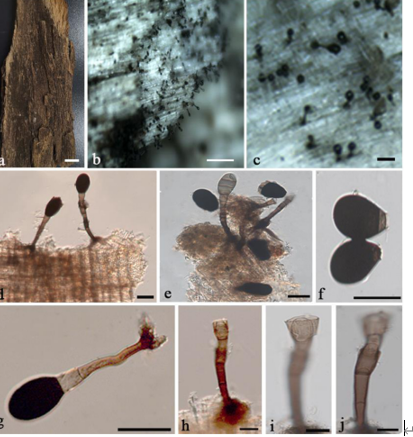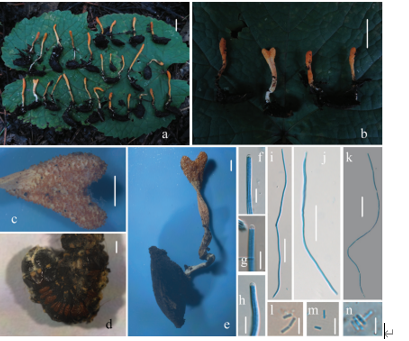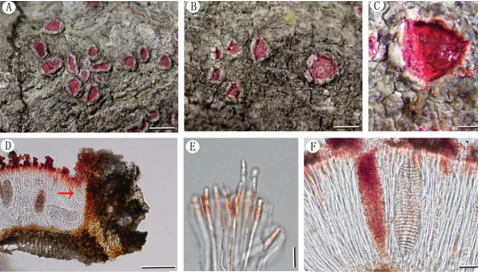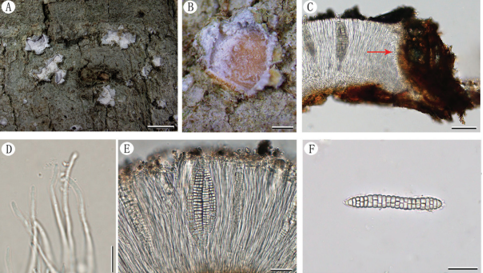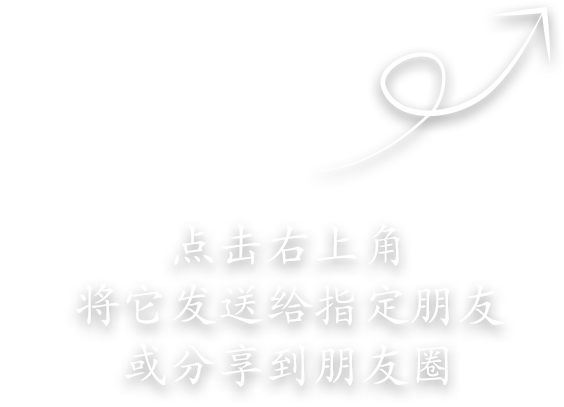Neocryphonectria carpini C.M. Tian, N. Jiang & Crous 2020
MycoBank MB831776
Holotype: CHINA. Beijing City, Fangshan District, on branches of Carpinus turczaninowii, 5 Oct 2018, N. Jiang & C.M. Tian (holotype BJFC-S1735, extype living culture CFCC 53027); ibid., paratype BJFCS1736, living culture CFCC 53028.
Morphological description
Sexual morph: Ascostromata single, semi-immersed, oval to circular from above, 600–1500 μm wide, 300– 600 μm high, comprising two layers, upper layer of yellowish orange to pale brown cells, turning purple in KOH, and inner layer of hyaline cells, mixed with plant cells. Perithecia immersed, aggregated, 3–6 in one stroma, globose to subglobose, fuscous black to umber, 200–350 μm diam with short necks. Asci 8-spored, unitunicate, cylindrical-fusoid to clavate, pedicellate, (65–)80–125(–150) × (11.5–)13–16.5(–19) µm, with distinct, J- refractive ring. Ascospores overlapping uniseriate to biseriate, ellipsoid to fusoid, aseptate, hyaline, smooth-walled, (11.5–)15–17.5(–19) × (5–)6–7.5(– 8.5) µm.
Asexual morph: Unknown.
Culture characteristics: Cultures incubated on PDA and OA at 25 C in darkness. On PDA effuse, first white and turning to pale brown after 10 d, reverse dark brown. On OA profuse cottony, with concentric rings, white to pale brown on surface, and gray in reverse.
Habitat: On branches of Carpinus turczaninowii.
Distribution: In China.
GenBank Accession: ITS: MN172413; 28S: MN172396; tef1-α : NA ;rpb2: NA
Notes: Neocryphonectria carpini is known from its sexual morph, which is similar to Cryphonectria, Endothia, and Holocryphia for having aseptate ascospores. Neocryphonectria can be distinguished from the latter genera by having short perithecial necks. Additionally, only Neocryphonectria in Cryphonectriaceae and Foliocryphiaceae inhabit Carpinus species.
Reference: Ning Jiang a, Xinlei Fana, Chengming Tian a et al.
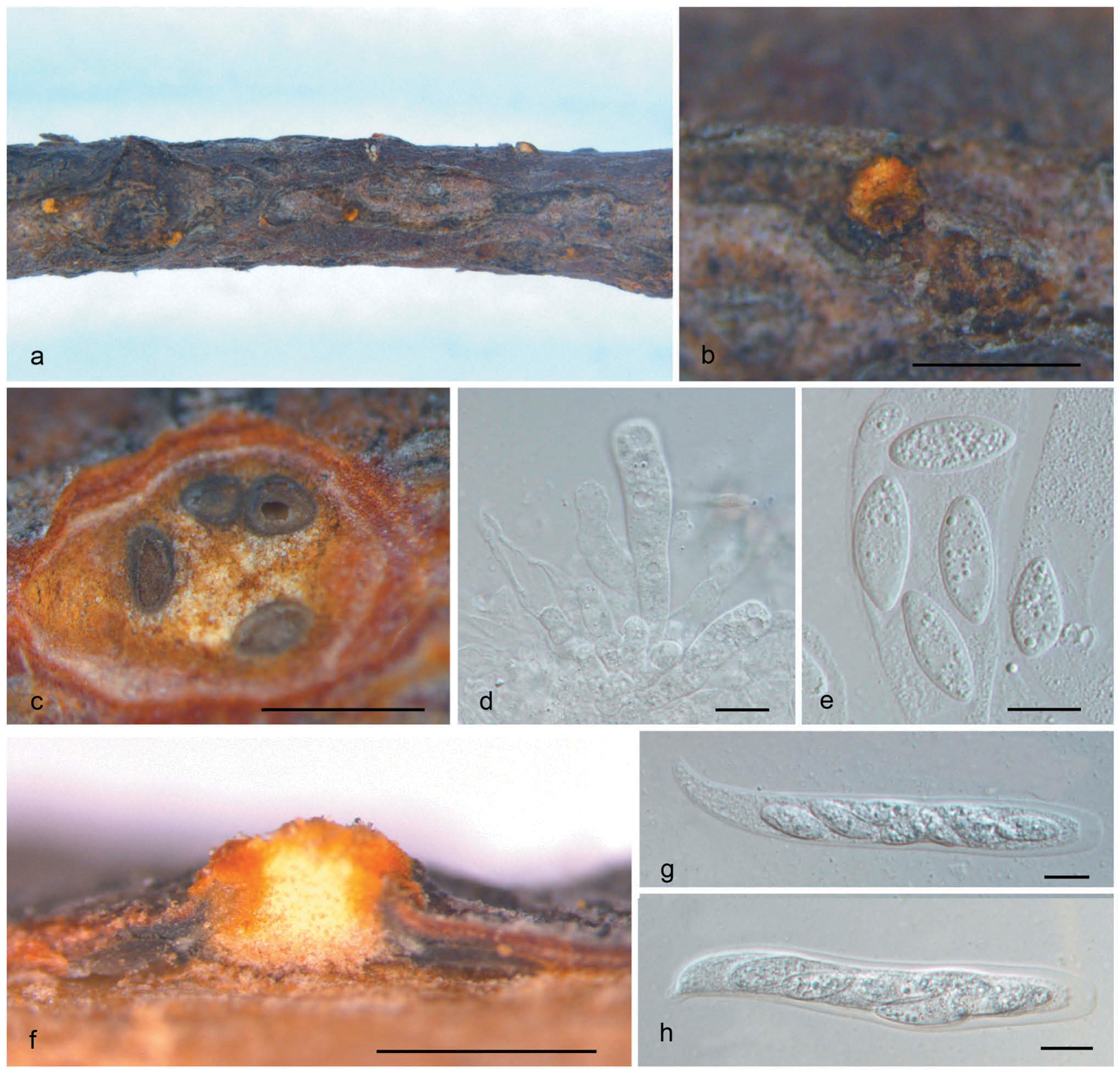
Morphology of Neocryphonectria carpini on Carpinus turczaninowii (holotype, BJFC-S1735). a, b. Habit of ascostromata on branch. c. Transverse section of ascostromata. d, g, h. Asci. e. Longitudinal section of ascostromata. f. Ascospores. Bars: b, c, f = 0.5 mm; d, e, g, h = 10 μm.


